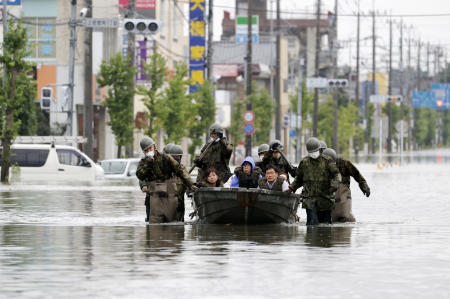
- ARAB NEWS
- 12 Jul 2025

Arab News Japan
TOKYO: The record-shattering rainfall that hit Japan’s southern island of Kyushu this week is connected to climate change, experts say.
Dangerous flooding and mudslides led to at least 62 deaths with more than 1.2 million people in the region evacuated.
While Japan’s rainy season beginning in June is nothing new, conditions have been changing somewhat in recent years and Japanese experts blame it on climate change.
“We cannot explain why rains in recent years are so severe without mentioning the fallout from global warming,” Eiichi Nakakita, a Kyoto University hydrometeorology professor, told the daily Asahi Shimbun.
Nakakita and other experts have pointed to rising ocean and air temperatures as one reason for the increased intensity of torrential rains, as they seem to be causing cumulonimbus clouds to appear more frequently over the past couple decades.
Cumulonimbus clouds, also called thunderheads, can bring rain, lightning and even tornadoes. While these types of clouds usually disappear within two or three hours, lately they have been sticking around longer and joining together, leading to deluges in the Japanese rainy season.
According to Kaoru Kawai, a weather forecaster, the change in the clouds’ behavior is not completely understood but is partially caused by warmer sea water.
These conditions led 19 locations across Kyushu to break 24-hour records for precipitation between July 3 and 7, including 489.5 millimeters in Yunomae, Kumamoto Prefecture.
Other affected prefectures included Fukuoka, Saga and Oita.